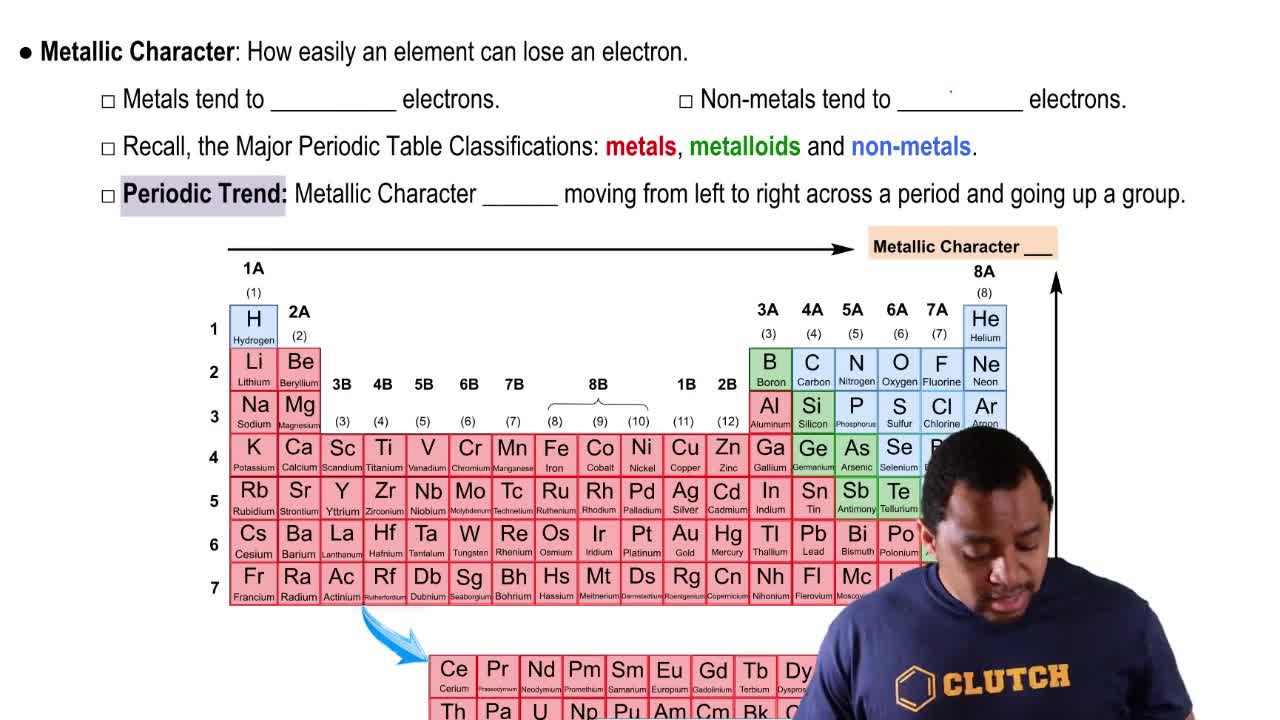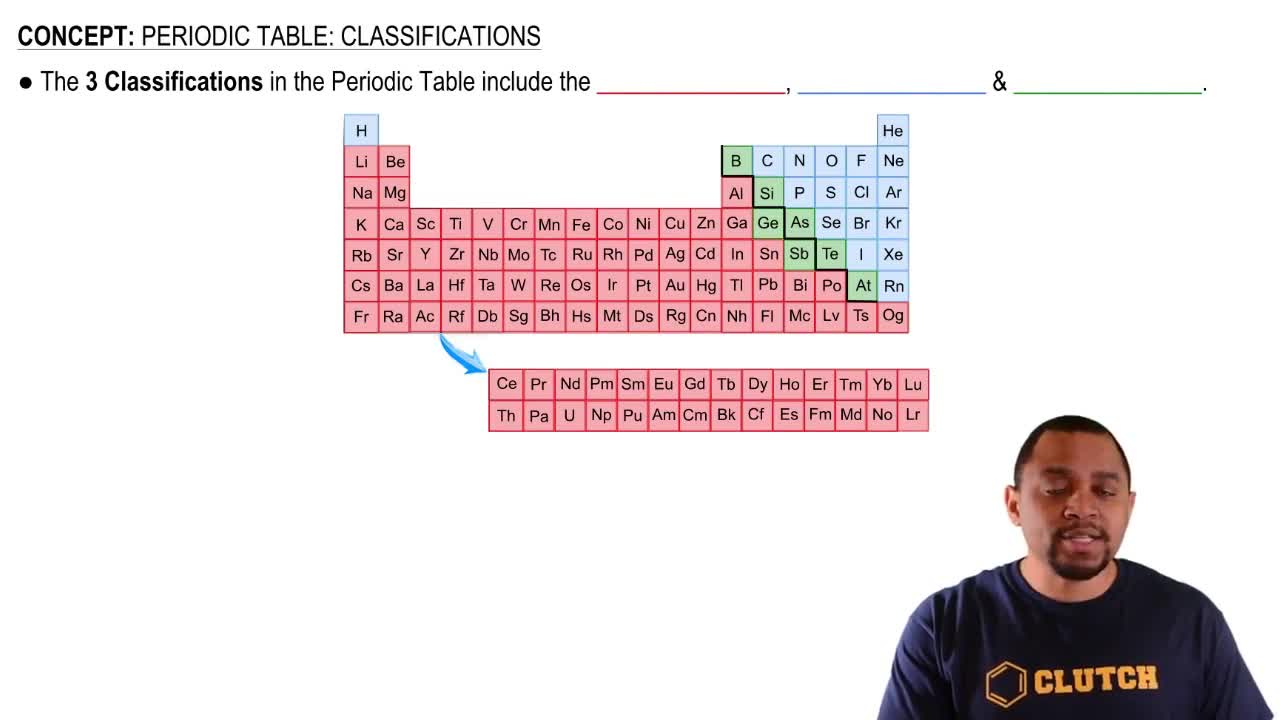Identify the group or period number described by each of the following:
a. contains C, N, and O
 Verified step by step guidance
Verified step by step guidance Verified video answer for a similar problem:
Verified video answer for a similar problem:



 5:33m
5:33mMaster Periodic Table: Group Names with a bite sized video explanation from Jules
Start learning